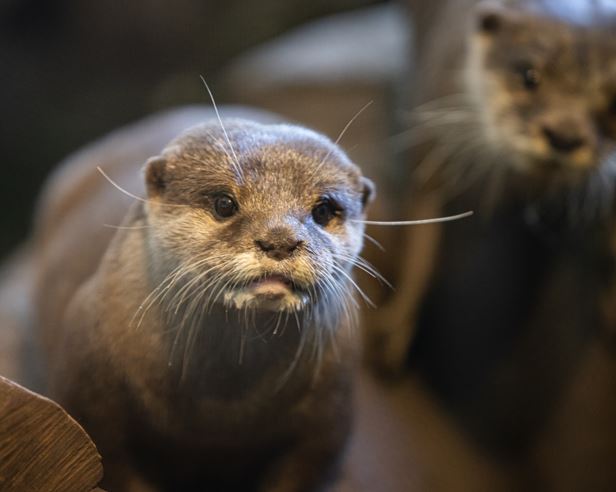Hurry! Offer ends soon!

Oriental small-clawed otter





Oriental small clawed otters are the smallest of the world’s 13 different otter species, measuring under a metre in length. They are a semi-aquatic mammal and are perfectly adapted to life on land or in the water. Also known as Asian short clawed otters, they typically have brown fur with a lighter underside. The top layer consists of longer waterproof, shiny guard hairs. The second layer is an insulating, fluffy under fur.
The varied diet of otters includes small fish, amphibians, shellfish, rodents, snakes, insects and eggs - they spend half their day hunting and feeding. They eat around one fifth of their body weight in food each day to fuel their very high metabolism.
Asian short clawed otters can reach maturity at 12 months old, but usually reproduce around 2 to 3 years of age. After a gestation period of about 60 days the female gives birth to a litter of up to six cubs. To begin with cubs are fed solely on the mother’s milk, with six times more fat than cow’s milk. Otters are extremely attentive parents. The male and other group members go out and hunt, bringing food back to the Holt for the mother and cubs.
Oriental otter populations are threatened by habitat destruction, overfishing, hunting, pollution and water contamination. Most of the world’s 13 species of otter have suffered a dramatic decline in numbers during the last century because of human activity. Most species are now protected by law but they are still trapped for fur and hunted as fish thieves.
Following a £150,000 investment, Otter Oasis was developed and opened at the Oceanarium in May 2011. This naturally themed display set in a lush bamboo forest with rocky pools and flowing streams became home to a pair of Oriental small clawed otters and following a successful captive breeding programme, a very cute yet very mischievous family of five otters can been seen at the Bournemouth Aquarium.